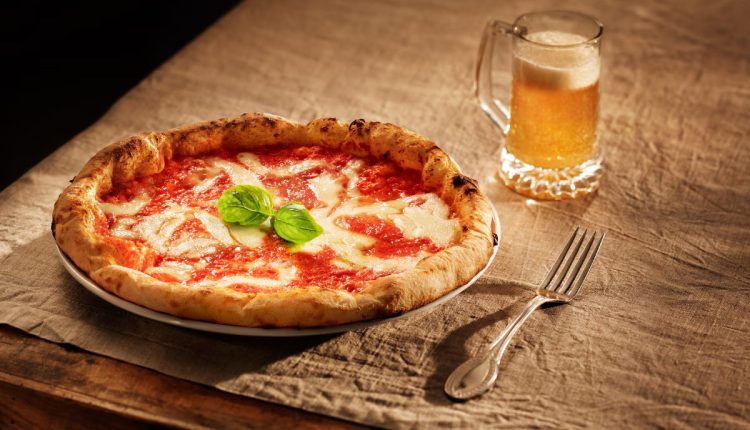Italy gave the world many priceless treasures — Renaissance art, opera, fast cars — but one of its most beloved contributions to global culture is undoubtedly pizza. Not the overloaded, cheese-stuffed, fast-food version you might find on a delivery app, but the authentic Italian pizza — thin, crisp, aromatic, and bursting with soul.
Let’s take a delectable journey to discover what makes Italian pizza so magical, how it differs from the rest, and why one bite is never enough.
A Brief History: Pizza’s Humble Roots
Pizza, in its earliest form, was born in the streets of Naples. In the 18th century, it was a food of the common people — cheap, quick, and easy to eat. Vendors would sell flatbreads topped with simple ingredients like tomato, garlic, herbs, and oil.
The legend of pizza changed forever in 1889, when Queen Margherita of Savoy visited Naples. A local pizzaiolo, Raffaele Esposito, created a pizza featuring tomatoes, mozzarella, and basil — the colors of the Italian flag — in her honor. Thus, the Pizza Margherita was born.
What Makes Italian Pizza “Authentic”?
An authentic Italian pizza is a masterpiece of simplicity and balance. Unlike many commercial pizzas that drown in layers of toppings, true Italian pizza celebrates quality over quantity.
Key Characteristics:
-
The Dough
Traditional Italian pizza dough is made with just four ingredients: flour, water, salt, and yeast. It’s slow-fermented for 24–72 hours, creating a soft, elastic texture and a flavorful crust with beautiful air bubbles. -
The Sauce
No sugar, no preservatives. Just crushed San Marzano tomatoes, seasoned lightly with salt and sometimes garlic or basil. -
The Cheese
Only fresh mozzarella, preferably Mozzarella di Bufala Campana, which melts beautifully and brings a rich creaminess to every bite. -
The Toppings
Kept minimal. Think olives, fresh basil, prosciutto, arugula, artichokes, or mushrooms. Nothing artificial. Nothing excessive. -
The Bake
Authentic pizza is baked in a wood-fired oven at scorching temperatures (450°C/850°F) for just 90 seconds. This creates the signature leopard-spot charring on the crust while keeping the center tender.
The Sacred Styles of Italian Pizza
1. Pizza Napoletana (Neapolitan Pizza)
The OG of pizzas. Thin in the center, slightly puffy and chewy at the edges, blistered from the fire. Usually served whole and eaten with knife and fork.
Classic Varieties:
-
Margherita: Tomato, mozzarella, fresh basil
-
Marinara: Tomato, garlic, oregano, olive oil (no cheese!)
2. Pizza Romana (Roman Pizza)
Crispier and thinner than its Neapolitan cousin. Often square-shaped, sold by weight, and ideal for a quick street-side snack.
3. Pizza al Taglio (Pizza by the Slice)
Popular in Rome and northern cities. These rectangular pizzas are baked in trays and sliced to order. Perfect for trying multiple flavors.
It’s Not Just Food — It’s Culture
In Italy, pizza is not a guilty indulgence — it’s a shared experience. Families and friends gather around a table with a glass of wine or a cold beer. Pizza is always made fresh, with love, and often paired with conversations that last hours.
In fact, in 2017, UNESCO added the art of Neapolitan “Pizzaiuolo” (pizza-making) to its list of Intangible Cultural Heritage of Humanity — a testament to its cultural significance.
Eating Pizza in Italy: What to Expect
If you’re lucky enough to dine at a traditional pizzeria in Naples or Rome:
-
You’ll notice the menu is short — a few signature pizzas done right.
-
Pizzas are typically not sliced — Italians eat them with knife and fork.
-
You can watch the pizzaiolo (pizza maker) work the dough by hand, fire it in the oven, and plate it with precision.
-
Expect seasonal ingredients — toppings vary depending on what’s fresh.
How to Make Authentic Italian Pizza at Home
Can’t fly to Naples right now? Here’s a quick tip to bring a taste of Italy into your kitchen:
Simple Neapolitan Pizza Dough Recipe:
Ingredients:
-
500g 00 flour (or all-purpose)
-
325ml lukewarm water
-
10g salt
-
2g dry yeast
Instructions:
-
Mix ingredients and knead until smooth (about 10 mins).
-
Cover and let rise at room temperature for 2 hours.
-
Refrigerate for 24 hours (develops flavor).
-
Bring to room temp, shape gently, top, and bake at your oven’s highest temp (preferably on a pizza stone).
Pro tip: Use the broiler/grill in your oven for the final 1-2 minutes to mimic the blistered top.
Why We’ll Always Love Italian Pizza
Authentic Italian pizza doesn’t try to impress with gimmicks. It wins your heart with honest ingredients, rich tradition, and a rustic charm that’s impossible to fake. Whether you’re eating it in a bustling Naples pizzeria or in your kitchen at midnight with flour on your shirt, every bite tells a story of centuries-old culinary passion.
So next time you order a pizza, think of Italy — of cobblestone streets, wood-fired ovens, and the soulful hands of a pizzaiolo. Better yet, seek out an authentic Italian pizzeria near you or try making it yourself.
Because when done right, pizza isn’t fast food. It’s a celebration of life — one slice at a time.


Comments are closed.